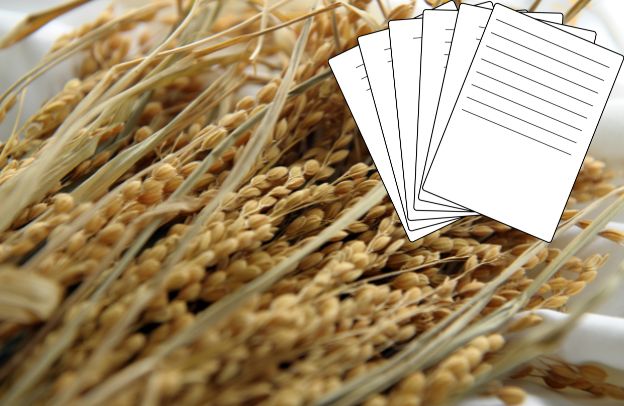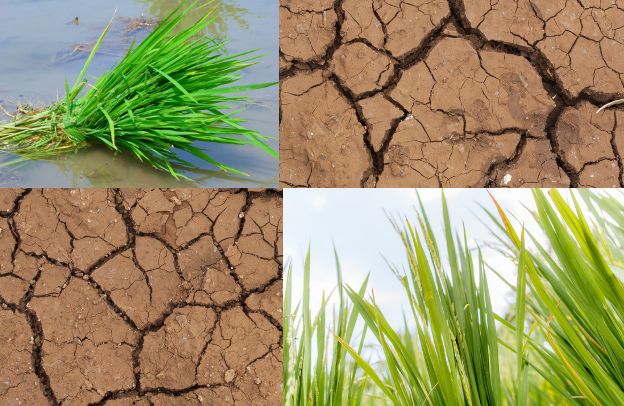Together We Grow: African Diaspora Uniting in Agribusiness

Can you imagine the great impact when African minds, resources, and passion are pulled together and focused on transforming the future of agribusiness? That’s the promise when the African diaspora joins forces, breaking down barriers and opening doors across continents. As someone connected to this dynamic community, you’re uniquely positioned to unlock massive opportunities in agribusiness which is achieved through collaboration, constant learning, and shared growth.
Want to learn more about storytelling? Start by downloading the first chapter of The Storytelling Mastery.
In an article titled “Unlocking Africa’s Agricultural Potential: The Power of Agribusiness, “the importance of agriculture in Africa’s economy was emphasized. For decades, agriculture has provided livelihoods for the majority of the population and served as a cornerstone of the continent’s economic development.
However, Africa’s agricultural potential extends far beyond subsistence farming. The real opportunity lies in agribusiness which is a dynamic fusion of agriculture and business practices that holds the key to unlocking unprecedented growth.
This discussion delves into the critical role of agriculture in Africa, the vast untapped potential of agribusiness, transformative innovations in agricultural technology, lucrative investment opportunities, value chain development, and the sector’s role in reducing poverty while promoting food security.
The Backbone of Africa’s Economy
Agriculture is the lifeline of many African economies, particularly in rural communities. It employs a large percentage of the workforce and significantly contributes to GDP, export earnings, and food security. With its diverse climates and fertile soils, Africa is uniquely positioned to produce a variety of crops ranging from essential staples to cash crops and high-value commodities.
Moving Beyond Traditional Agriculture
While traditional farming has sustained livelihoods, agribusiness offers a transformative pathway. By integrating modern business practices with agriculture, Africa can create more jobs, increase productivity, and access lucrative global markets. This shift will not only enhance economic resilience but also elevate Africa’s role as a global agricultural powerhouse.
Agriculture’s importance to Africa is undeniable, but the future lies in scaling up agribusiness, embracing innovation, and developing value chains to foster sustainable growth and prosperity for generations to come.
Now, let’s dive into why this matters and how the diaspora can lead this transformation.
Why the Diaspora Holds the Key to Agribusiness
The African diaspora with an estimated 300 million strong base has the power to change the face of global agribusiness. Sure, remittances help fuel economies, but the true impact goes deeper. With African-inspired foods and organic produce gaining popularity, the opportunity is ripe for diaspora entrepreneurs. We’re talking about the potential to redefine food security, promote sustainability, and build economic strength.
Consider the rise of African food products in mainstream U.S. and European markets. From dried mangoes to specialty African grains, demand is growing. Why? African diaspora entrepreneurs understand these markets.
Brands like Reel Fruit have tapped into this, bridging Africa and the West by introducing dried fruit products, creating jobs, and preserving culture. This isn’t just business; it is a cultural connection.
See also Best Marketing Strategies for Small and Medium-Scale Farmers in African Agribusiness
The Power of Collaboration
Agribusiness has the power to transform economies, feed millions, and create sustainable livelihoods. The thing here is that success in this sector is not a solo adventure. It requires partnerships, shared resources, and a collective vision.
When it comes to collaboration, the Smart Cassava & Agribusiness Development (SCAD) project, an initiative by Evideos, a nonprofit organization based in Verona, Italy, serves as a prime example. Although still under development, SCAD aims to empower the Esan region of Nigeria through sustainable agricultural development, focusing on cassava research, training, and production facilitation.
The project is designed to engage African diaspora agribusiness entrepreneurs interested in farm production in Africa, fostering mutual benefits for all involved. This initiative truly demonstrates the power of collaboration.
By working together, agribusiness stakeholders can unlock markets, pool resources, and accelerate growth. Here’s why collaboration is a game-changer in agribusiness:
- Resource Sharing: Imagine reducing costs by sharing investments in key infrastructure like distribution channels, warehousing, or co-packaging facilities. This not only cuts expenses but also increases efficiency, making it easier to scale operations and compete in larger markets.
- Network Growth: Partnerships open the door to valuable networks. Organizations like the Africa-Europe Diaspora Development Platform (ADEPT) connect African entrepreneurs with mentors, funding, and market opportunities across Europe. Access to such networks provides critical insights and support that can propel businesses forward.
- Collective Market: Creation
By co-investing in logistics and distribution, businesses can lower individual costs and create a collective impact that drives access to untapped markets. This approach creates opportunities that would otherwise be too expensive or complex to pursue individually.
This is not just a concept, it is a proven model. Initiatives like ADEPT and the FAO’s Hand-in-Hand Initiative are already bridging gaps, providing resources, and fostering knowledge-sharing among African entrepreneurs. These programs are paving the way for collective growth and sustainable success in agribusiness.
Collaboration is not just a strategy; it’s the foundation for building a thriving agribusiness ecosystem. By working together, entrepreneurs can transform challenges into opportunities, creating a brighter future for themselves and their communities.
See also: Collaborations and Networking: How to Build a Creative Ecosystem That Can Fuel Your Business
Staying Competitive: The Power of Learning
Agribusiness is an evolving landscape with emerging technologies, shifting consumer preferences, and stringent global standards which means that standing still is not an option.
To thrive, African entrepreneurs must prioritize continuous learning and adapt to industry trends.
Here’s where to focus your efforts:
- Master Compliance Skills
Breaking into international markets requires a solid grasp of regulatory standards. Food safety regulations are becoming stricter, and staying compliant is non-negotiable. However, with the right training, you can confidently meet these requirements, ensuring your products are both competitive and globally marketable. Compliance isn’t just a hurdle, it is a pathway to trust and credibility. - Boost Technical Knowledge
Expertise in agronomy, supply chain management, and digital marketing is essential for keeping up with industry advancements. Digital marketing, in particular, opens doors to global audiences, enabling you to sell directly to consumers via e-commerce platforms. Imagine showcasing your high-quality produce to markets thousands of miles away, bypassing traditional distribution barriers. - Leverage Support Networks
Organizations like Food Bridge in Europe are equipping African entrepreneurs with the tools and knowledge to succeed. They offer training programs, market insights, and access to valuable resources tailored for agribusiness leaders. Taking advantage of such opportunities can transform challenges into growth opportunities.
The agribusiness landscape rewards those who are proactive. By investing in skills and staying informed, you not only keep up, but you will set yourself apart as a leader. Continuous learning isn’t just a necessity; it’s your competitive edge in driving sustainable success.
See also The Continuous Learning Edge: How Creative Entrepreneurs Can Thrive in a Rapidly Evolving Market
How to Start Your Agribusiness Journey
Thinking about Agribusiness? Here is a quick guide:
Agribusiness is a promising venture, but it requires strategy, collaboration, and adaptability to succeed. If you’re considering stepping into this dynamic sector, here’s a roadmap to help you navigate the journey:
- Start with Market Research: Success begins with understanding your market. What’s in demand? High-value products like organic spices, African superfoods, and dried fruits are trending globally. Study your target consumers, both local and international, to identify niches you can fill. Whether it’s exporting raw produce or creating value-added products, knowing the demand ensures you’re planting the seeds for success.
- Grow Your Network: The agribusiness journey isn’t one to travel alone. Connect with organizations like Food Bridge, ADEPT, and the Hand-in-Hand Initiative. These groups offer invaluable resources, from market entry strategies to partnerships with potential collaborators and mentors. A strong network can provide guidance, access to funding, and shared opportunities that are crucial for scaling your business.
- Innovate Your Product Offerings: Today’s consumers prioritize convenience and health. Go beyond traditional products by offering innovative solutions like ready-to-eat snacks, minimally processed foods, or organic options. For example, introducing plant-based or gluten-free African delicacies can appeal to health-conscious global audiences and set you apart in competitive markets.
- Prioritize Quality and Collaboration: Agribusiness thrives on trust. When you focus on producing high-quality products, consumers and partners take notice. Collaborating with like-minded entrepreneurs amplifies your reach while reducing costs—shared investments in warehousing, logistics, or processing facilities can make a significant difference.
Entering the agribusiness space is not just about growing crops or creating products, but about building relationships, embracing innovation, and delivering value. By aligning your efforts with these principles, you’re not only starting a business, but you are contributing to Africa’s agricultural transformation and tapping into a thriving global market.
Check this out too: Agribusiness Marketing Strategy in 2024: Harnessing the Power of Storytelling to Drive Success
Shaping the Future of African Agribusiness Together
This movement goes beyond individual success; it is about rewriting the narrative of Africa’s contribution to global markets. It’s a legacy of pride, resilience, and innovation, showcasing the richness of African goods and the continent’s undeniable potential in agribusiness.
By uniting under shared values and leveraging collective strength, the African diaspora is not only elevating the perception of African products but also fostering a culture of sustainable growth and collaboration.
The world is beginning to see Africa not just as a resource-rich continent but as a hub of innovation, entrepreneurship, and unmatched agricultural excellence.
Continuous learning is the fuel for this transformation. Staying ahead of global trends, mastering cutting-edge technologies, and adhering to international standards ensure that African entrepreneurs remain competitive in a rapidly evolving market.
Through this dedication, we are not just building businesses, but we are creating opportunities that will inspire and sustain generations to come.
It is a call to action for every African entrepreneur, investor, and change maker to let us unite with a common purpose, empower each other through shared knowledge and resources, embrace the challenges, and celebrate the victories that come with transforming African agribusiness.
Together, we have the power to grow beyond borders, elevate our communities, and establish a future where African agribusiness stands tall on the global stage. This isn’t just a movement, but it is a revolution. Together, we thrive. Together, we grow.
Want to learn more about storytelling? Start by downloading the first chapter of The Storytelling Mastery.






